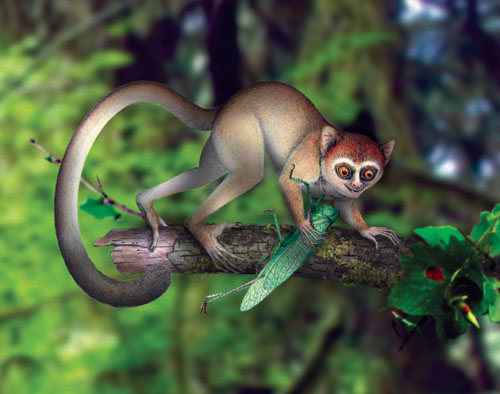One research discovery from Institute of Vertebrate Paleontology and Paleoanthropology (IVPP), Chinese Academy of Sciences, "The oldest known primate skeleton and early haplorhine evolution", developed by Dr. Xijun Ni, and his collaborators from USA and France, was honored as the 48th of this year's top 100 science stories by Discover magazine.
In an article published June 06 2013 in the prestigious journal Nature, Dr. Xijun Ni, and his collaborators announced the discovery of the world’s oldest known fossil primate skeleton representing a previously unknown genus and species named Archicebus achilles. The fossil was unearthed from an ancient lake bed in central China’s Hubei Province, near the course of the modern Yangtze River. In addition to being the oldest known example of an early primate skeleton, the new fossil is crucial for illuminating a pivotal event in primate and human evolution—the evolutionary divergence between the lineage leading to modern monkeys, apes and humans (collectively known as anthropoids) on the one hand and that leading to living tarsiers on the other.
Archicebus differs radically from any other primate, living or fossil, known to science. It looks like an odd hybrid with the feet of a small monkey, the arms, legs and teeth of a very primitive primate, and a primitive skull bearing surprisingly small eyes. The tiny size and very basal evolutionary position of Archicebus support the idea that the earliest primates, as well as the common ancestor of tarsiers and anthropoids, was miniscule. This overturns earlier ideas suggesting that the earliest members of the anthropoid lineage were quite large, the size of modern monkeys.
From space exploration to medicine, technology, paleontology and the environment, "We selected the top 100 stories based in part on each item’s impact and implications on its particular field," said Steve George, editor of Discover, “and our countdown puts these discoveries in context so you can understand the bigger picture. These top 100 stories made 2013 a thrilling year in science.”

Fig.1 Three-dimensional reconstruction of the type specimen (IVPP V18618) of Archicebus achilles. (Image by NI Xijun)  Fig.2 Reconstruction of Archicebus achilles in its natural habitat of trees. (Image by NI Xijun) |

